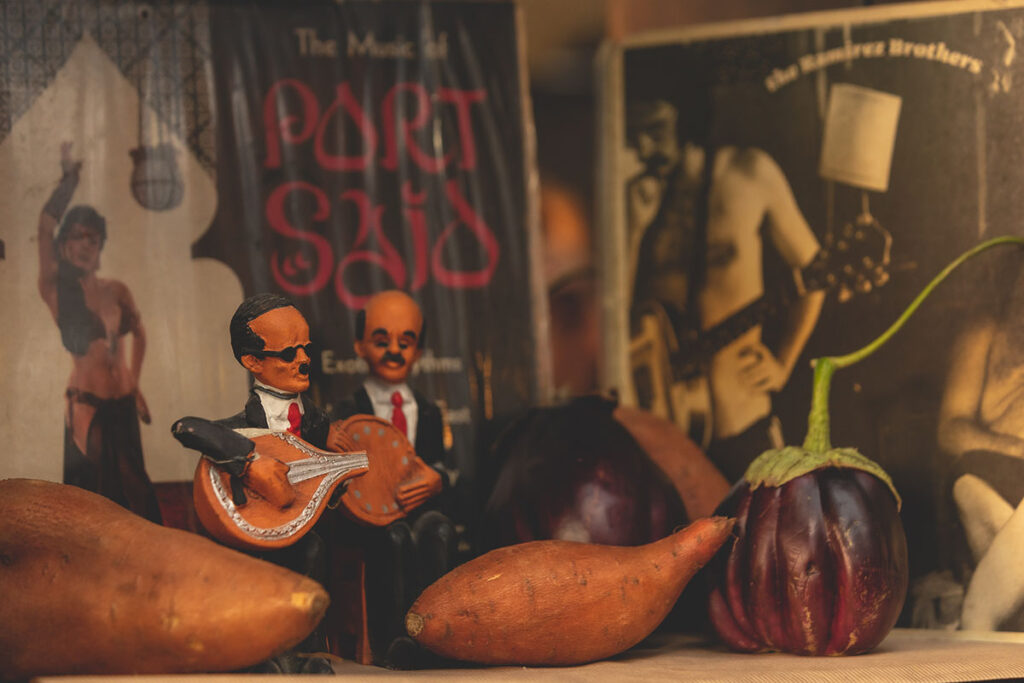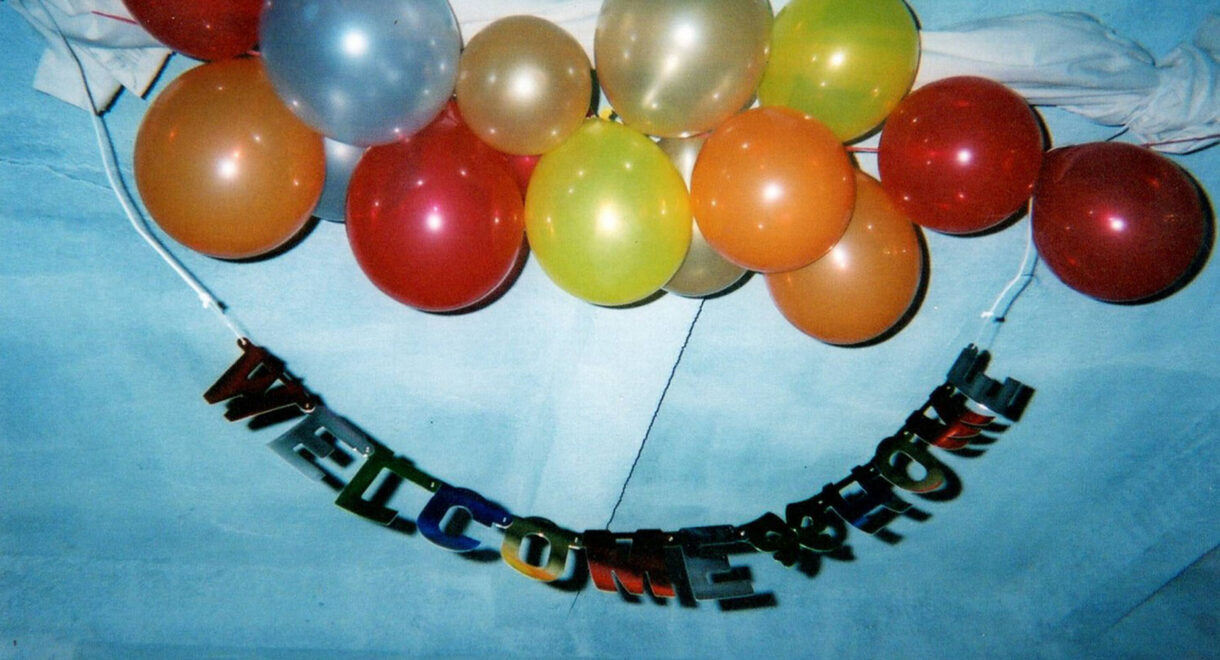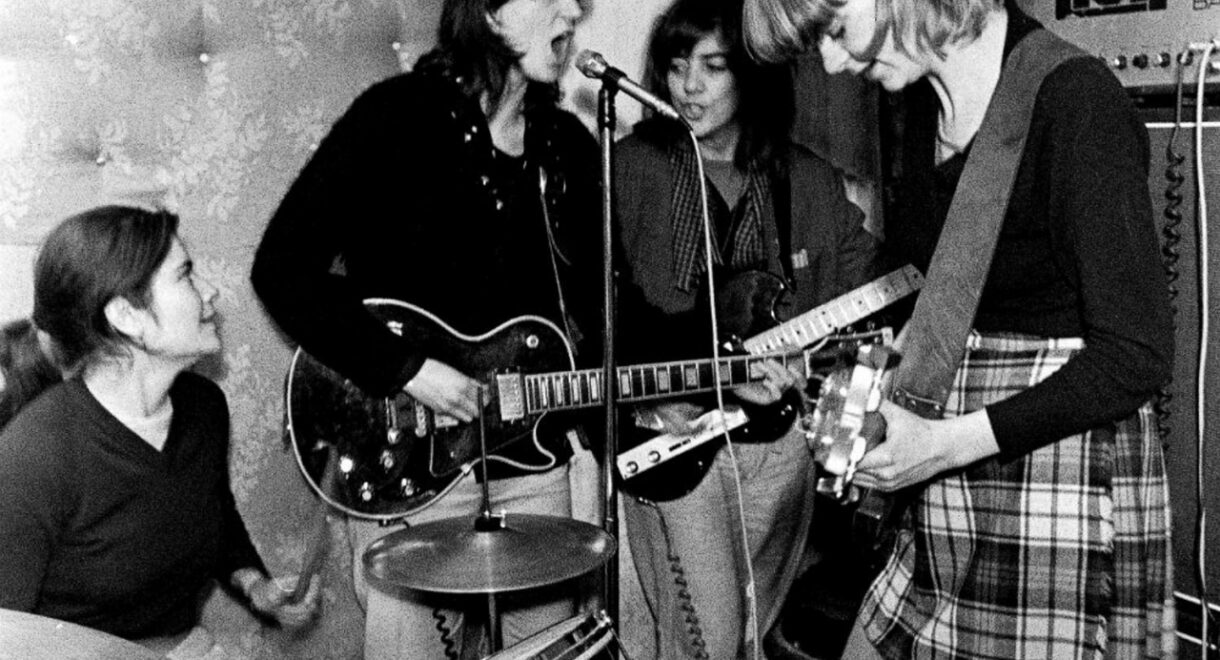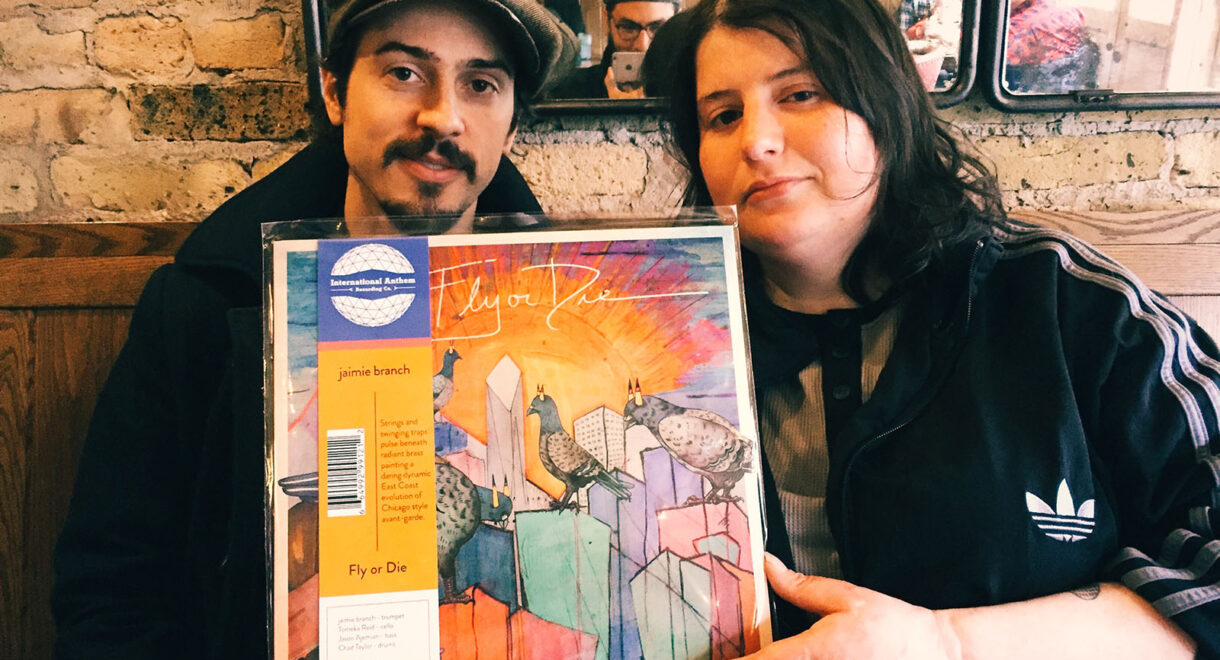Gelareh Khoie shares the story of thirtyninehotel, a legendary nightclub, art gallery, and performance space powered by Klipschorns from David Mancuso’s Prince Street loft parties. Love (Art & […]
Port Sa’id: Fresh Ingredients, Timeless Sounds, and a Community Atmosphere

In anticipation of our upcoming collaboration in New York, In Sheep’s Clothing’s Phil Cho speaks with Port Sa’id co-founder Zack Bar.
Years before our first listening bar opened in the Arts District, we visited Port Sa’id, a space that would deeply inspire us on our journey to launching In Sheep’s Clothing. More than just a restaurant or bar, Port Sa’id felt like a truly unique kind of meeting place in Tel Aviv with a vibrant outdoor area where people conversed, drank, and shared freshly prepared dishes from chef Eyal Shani alongside a warm, inviting indoor space where full album sides played from a massive in-house record library and custom-built sound system. It was one of the first times we experienced vinyl and analog culture integrated so seamlessly into a restaurant and bar setting.
We’d eventually be introduced to the team behind Port Sa’id through our mutual friend Alejandro Cohen, executive director of LA-based independent radio station dublab. In getting to know each other, co-founder Itai Drai shared, “With Port Sa’id, we were aiming for something that can last forever and is not about hype – simple and fresh food that you can always trust on, timeless records that you want to hear from start to finish, and a casual atmosphere that is open for all.” Realizing we shared many of the same ideas and approaches to music, food, and analog culture, we made plans for a future collaboration…
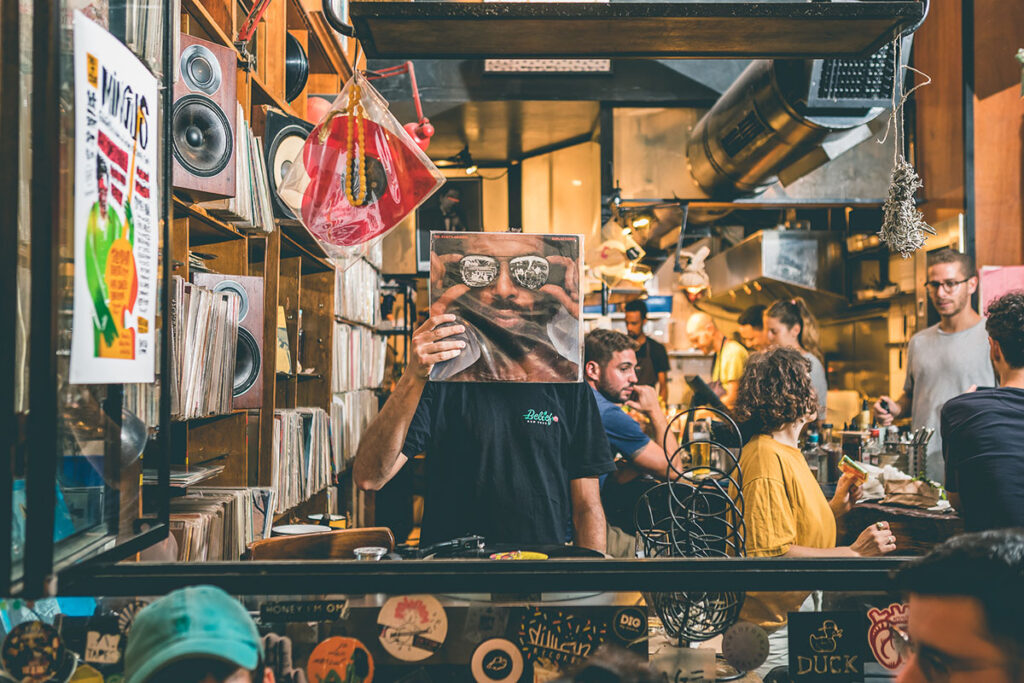
In just over a month, we’ll be opening the doors to our new shared space with Port Sa’id in Lower Manhattan. In anticipation, In Sheep’s Clothing’s Phil Cho spoke with Port Sa’id co-founder Zack Bar to learn more about Port Sa’id’s beginnings, early inspirations, their record library, community, and more. Stay tuned for a followup feature on the various other institutions run by the team behind Port Sa’id, including online radio station Teder.FM, Romano, Kissa, Nuweiba Records, and Club Rafi.
Be sure to follow In Sheep’s Clothing NYC and Port Sa’id NYC on social media for the latest news.
Hello Zack! To start things off, when was Port Sa’id founded and how did the idea first come together?
First and foremost, the history of Port Sa’id begins with Teder.FM. We first opened Teder in 2010 as a popup concept at the location where Port Sa’id is now. We called it Teder Popup Radio Bar. The idea was to do an online radio station, but within a bar. It would be at a physical place, so people could listen and see the broadcaster or the DJ. We did it in the summer of 2010, and it was so successful that we kept it going for three and a half months, 100 days, which is a long popup. Then we came back for the summer of 2011 at the same location, which was also very successful and fun, but after this season we realized that if we wanted to keep Teder fresh, we couldn’t just popup at the same place every time. So we decided in 2012 that Teder would move to a different location.
However, the original Teder spot was too good to leave so we decided to collaborate with Eyal Shani on a new project. Eyal is a legendary chef now, but back then, not many people knew him. He was more like a poet chef, and I admired his work and his food. Eyal is a big inspiration in terms of how he looks at food and takes care of the ingredients and cooking. I saw a lot of things that we shared in our passion for music and his passion for food. This connection was foundational for Port Sa’id because he was making analog food and we were into analog music. I asked him to participate during the second season of Teder.FM and he advised us and did a small menu. After the popup, we decided to open a more permanent place, which became Port Sa’id.
What’s the concept behind the food and menu?
The food is super simple. Again, I really love the way Eyal approaches food. It’s all about ingredients, freshness, and doing things at that moment. Nothing is ready made. This is the main thing with Eyal, he’s very precise and he insists on doing his thing. When you eat it, you feel it, that it’s fresh and something that someone prepared for you just now. It’s not waiting for you in a plastic box and someone put it on the plate. This is something that is super important to understand about Eyal’s cooking. It’s all about the ingredients. The idea of Port Sa’id is also about sharing. It’s typically three or four people at a table sharing five or six small to medium size dishes, and a lot of vegetables.
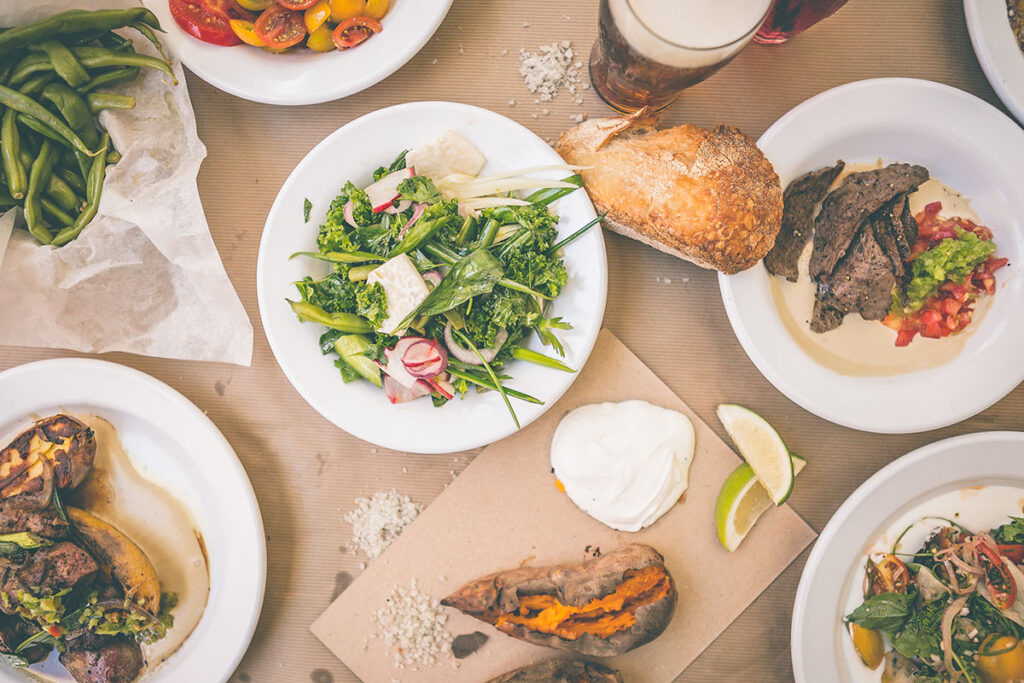
As collectors, we can get into specifications and talk about the history behind the music, liner notes, etc. It’s the same with Eyal and his food. That’s the connection. Everything at Port Sa’id has a reason behind it.
Where did the inspiration come from to open Port Sa’id specifically as a vinyl / analog focused restaurant/bar? I’m curious if there is a connection to Japanese vinyl bar culture or if there are other inspirations for this type of spot in Israel or around the world?
Japan is a big inspiration for me for a lot of things in culture and aesthetics. When I first saw listening bars in Japan, it blew my mind. When we started, Japan was definitely an early inspiration, but I knew that we couldn’t make it the same here. The Port Sa’id space itself is very small, and most of the people are sitting outside. So it feels more like a street kind of place, or like a European tavern. Inside, the idea was to have a dialogue between the music and the food. The record library is on one side, and the other side is the kitchen. The music comes from this small, almost womb-like space and goes outside to the yard, to the people. The layout is something very unique to Port Sa’id in Tel Aviv and we hope to bring something similar to New York. In terms of the music played, it’s something that we always put a focus on, but it’s not a listening room by any means. It’s super rusty and rough because it’s from the street. That’s why we are happy to collaborate with you guys to have a more focused listening room next door to this more busy, rush of sounds with the food and people at Port Sa’id.
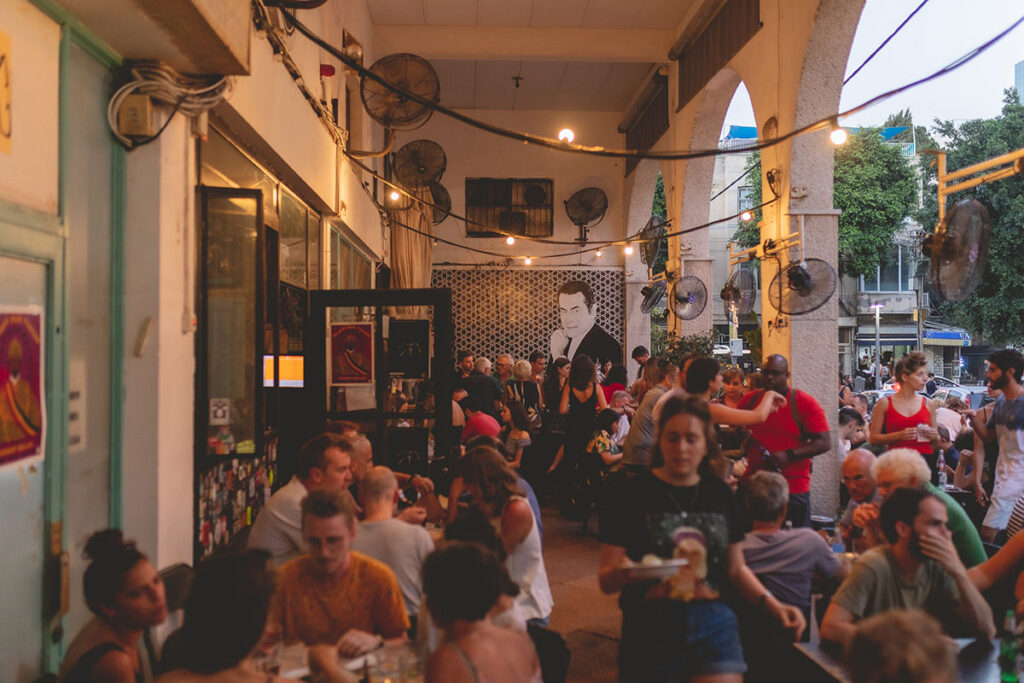
How would you describe the relationship between the food and the music at Port Sa’id? It seems they are both equally important.
Exactly. As collectors, we can get into specifications and talk about the history behind the music, liner notes, etc. It’s the same with Eyal and his food. That’s the connection. Everything at Port Sa’id has a reason behind it. Putting the two together was something no one had done before in Tel Aviv.
Can you take us through a typical day?
Port Sa’id is open every day from noon till late at night. We don’t have reservations, so people go in and out throughout the day. Some people can stay for hours. They begin with eating, then drinking, and then hanging out. So we like to say it’s more like a meeting place, not necessarily a restaurant or a bar, but something in between. For the first eight hours of the day, we play “staff picks” from a rotating selection of about 200 records from our library. The selections are played off of one turntable, and we play the entire side. It’s typically daytime music that’s fun to listen to when it’s sunny like reggae, balearic, African music, and, naturally, Middle Eastern music as well. We also play around with it quite a bit. Sometimes, we might play some Moodymann during the day, or do some mini programming like radical hour with more far out music. We have a big library to pull from and we believe in our collection. 90% of the records in our collection should be amazing and played out. Then at around 8:30 or so the guest DJ comes to play favorites from their own collection.
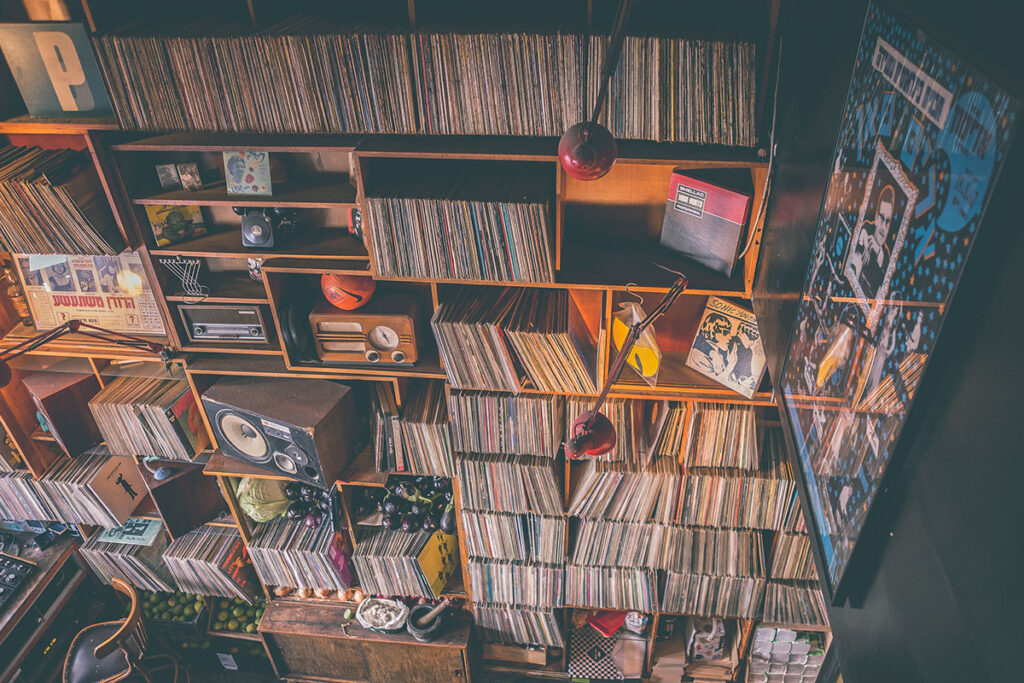
The character of a place is very important for us, especially in the record library, because for us, this is a shrine, a holy temple. It makes it more personal for us.
I would love to know more about the in-house vinyl collection at Port Sa’id. How were the records sourced and curated? Is there a particular sound or vibe behind the curation?
We began very DIY with a small budget to buy a couple of hundred records. The rest were all brought in from our own personal record collections. It was the only way we could make it happen in the beginning. Four of the founding partners contributed and in many ways the record collection felt like a part of ourselves. We played and knew every record in the collection. Slowly, we made some money and were able to pull out our own records and buy more to fill out the in-house collection at Port Sa’id. We also started to have a monthly budget for records to buy and update the collection. We’ve been continuing to build it for twelve years now, and there are about 3,000 records currently. It’s an amazing collection, really.
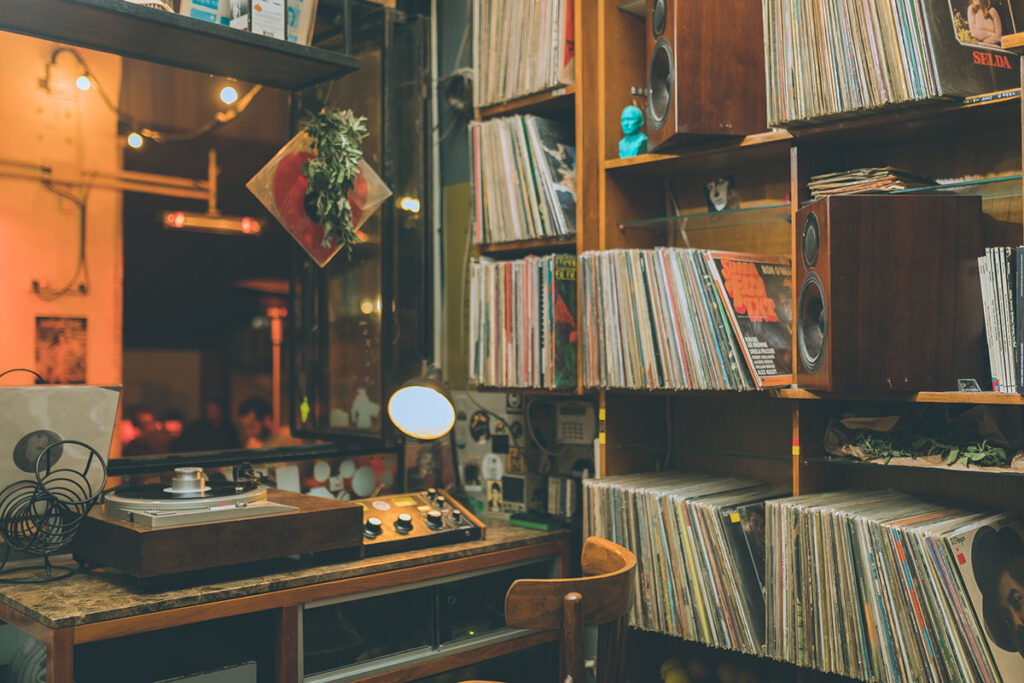
There’s a red heart-shaped vinyl featured prominently in the record booth. What’s the story behind that? Love seems to be a theme based on what I’ve seen on social media.
That’s Mayer Hawthorne’s debut release on Stone Throw. Back in the day, one of our managers really loved that record and used to play it once a day. It’s a heart shaped 7-inch single that everyone sees when they walk in. On the other side, we also have some herbs and other ingredients because that’s what Eyal is all about. We love to kind of combine things. In our record library, you can find eggplants, tomatoes, vegetables, fruits, etc. We love artifacts so we also have things like a J Dilla doll, Quasimoto, picture discs, and things from all over the world. These items are not just for decoration, they’re part of the DNA of Port Sa’id. The character of a place is very important for us, especially in the record library, because for us, this is a shrine, a holy temple. It makes it more personal for us.
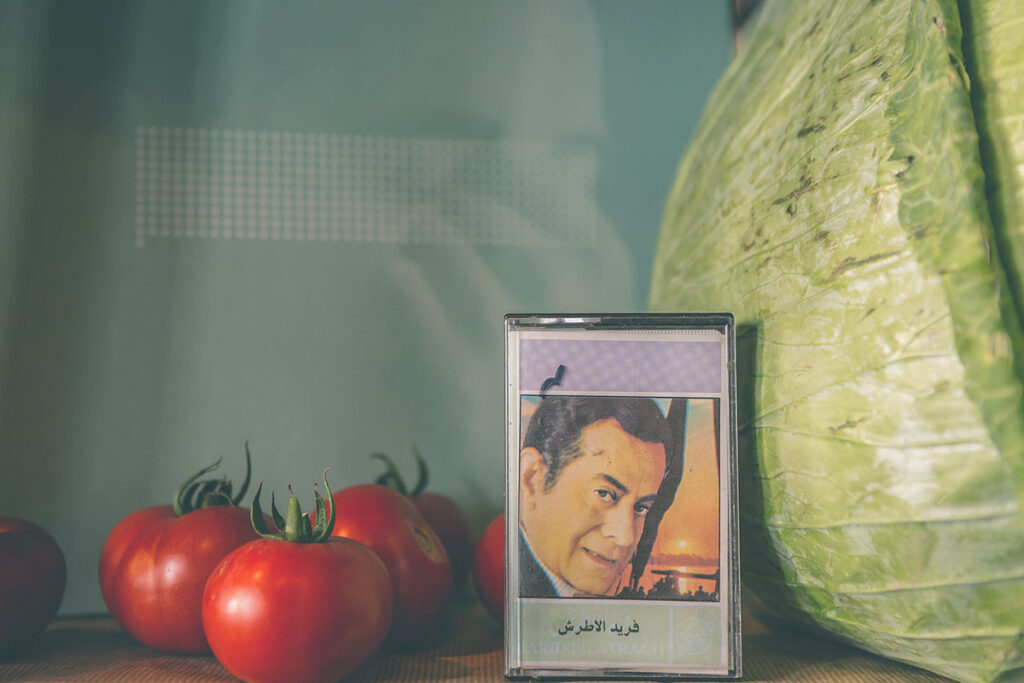
Of course, Port Sa’id also focuses heavily on Middle Eastern music. For those unfamiliar, can you describe the music released on your label and what you’ve described as the “Fortuna Sound”?
For us, this is who we are. First and foremost, it’s a dialogue. Israel is such a melting pot of different cultures, and that’s sometimes overshadowed by the conflict between east and west. That’s what we love about music. It can be naive, humoristic, but also deep concerning the east and west clash. The east and west collision is something that we live with everyday, so with our music, it can also be a clash between other things, like analog versus digital. We like sounds that have kind of a left angle. We like music that is oriental, but with western instruments, or the opposite.
The history of Tel Aviv is Arabic, Middle Eastern, and Mediterranean. It’s music that has been playing for hundreds of years. Of course, it evolves and goes to certain places but it always has our roots. Arabic music is so rich because we have quarter tones and hundreds of different scales, unlike European or Western music. The collision or fusion with other sounds is something that we really love and what we’re looking for. I’m not saying that we’re not also playing fully traditional stuff, but it’s mainly this type of fusion in the music that we like. It’s the second step. For instance, with jazz, we’re not necessarily going to play big band or swing, but we will play hard bop and spiritual jazz. The music has made this journey until it sounds like that. There’s so much amazing music to come out from this region. From Turkey, there’s all this amazing Anatolian rock that sounds better than even Led Zeppelin… Egyptian music, Lebanese music, etc., it’s all so rich. This is where we come from, what we’ve studied, lived, and what we love to share with the world. Each record has a story to tell. That’s what we love to explore and dig into the archive of where we come from.
Our label, Fortuna Records, was established the same year as Port Sa’id. The idea was to reissue sounds that didn’t get enough exposure the first time around. Most of the releases explore genres like Turkish disco, Spiritual Yemenite jazz. The music is a combination of sounds from both sides of the world. This is our thing and what we love.
From what I’ve read, Port Sa’id seems like a very open and welcoming space with a vibrant community around it. What is the community like around the restaurant and how has it developed over the years?
When we first opened Teder.FM as a popup, the space became a platform and hub for musicians, DJ’s, and record collectors. When Port Sa’id opened in 2012, it became a continuation of this community that had already been building through Teder. Naturally, all of our friends, music lovers, musicians, producers, promoters, etc. came to Port Sa’id. Some of them would even get involved and contribute a curated shelf in the record collection. Eventually, most of the nightlife, art, and fashion scenes came by. It was also very important for us from day one to host guests from around the world and tell them the story of Port Sa’id and our record library. In time, our network grew around the world, mainly from Europe because it’s closer, but also a lot of Americans as well.
We always make a deal with the promoters in town to bring visiting artists to come and have dinner or drinks at our place before or after the party. This is super important strategically in terms of building our community because then the musicians from around the world can also meet and collaborate with the like-minded people here in this small place.

With the staff, there are a lot of amazing stories of people who worked for us who are now big shots, huge artists playing around the world, big chefs, or directors. Because we’ve run this place for so long, there are so many people that used to work with us who are now doing their own thing and they’re a part of our community. Over time, it just echoes because these people are always still with us in many aspects.
Local guest DJs/selectors play their favorite records at Port Sa’id every night. As a port city, do many guest selectors come in from out of town? How have the guest selections shaped the culture of Port Sa’id?
Yes, we started inviting out-of-town guests from the very first or second year of Port Sa’id. Every month, we would invite a label boss to bring records for the library and play. That was definitely part of our agenda. We did it with Ninja Tune, Coldcut, Peanut Butter Wolf (Stones Throw), Analog Africa, Numero Group, Mississippi Records. We invited all of them here to bring records from their label catalog to add to the collection. This was also a big part of building our community, because we wanted these people to be a part of Port Sa’id. This is something we’d love to do in New York as well.
